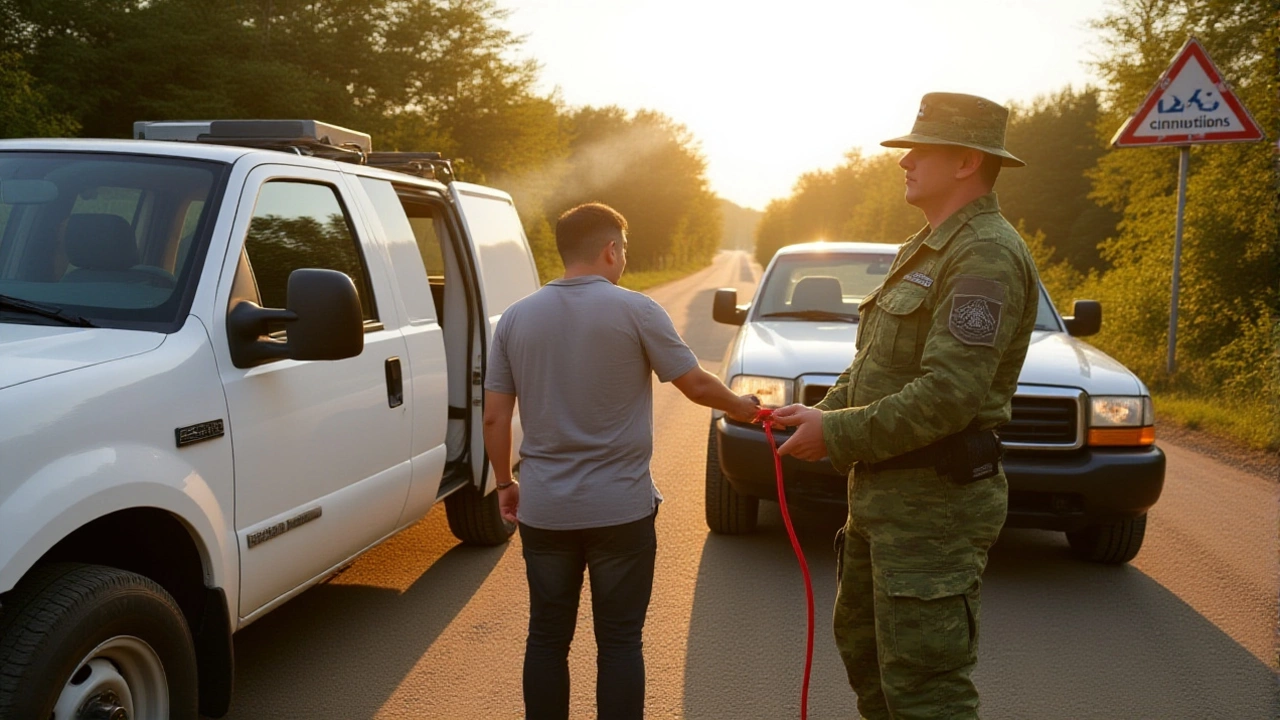When Panama climbed back to #1 in International Living's 2025 Global Retirement Index, it wasn’t just a ranking shift—it was a signal. American retirees, tired of soaring U.S. healthcare costs and shrinking Social Security buying power, are voting with their passports. And Panama’s Pensionado visa program is the golden ticket. Described by Global Citizen Solutions as “the easiest retirement visa in the world,” it requires nothing more than proof of a monthly pension or annuity—no complex paperwork, no property purchase, no language exams. Just show up, settle in, and start saving.
Why Panama Won Back the Top Spot
Panama didn’t just rely on its reputation. It improved. Over the past two years, the country streamlined visa processing, expanded medical networks for expats, and cracked down on bureaucratic delays that once frustrated newcomers. Now, retirees report getting their Pensionado cards in under 30 days, compared to six months just three years ago. The cost of living? Remarkably low. A two-bedroom apartment in Panama City’s quieter districts like San Miguelito or David costs under $800. A doctor’s visit? $30. A full dental crown? $350. And the healthcare system? Ranked among the top 30 globally by the WHO—better than Canada and the UK on cost-to-outcome ratios.
It’s not just about price. It’s about predictability. Unlike some European nations tightening visa rules, Panama doubled down on welcoming retirees. The Pensionado program grants discounts on utilities (up to 50%), public transport (75% off), and even movie tickets. One 68-year-old retiree from Ohio told me: “I pay less for my insulin here than I did for my monthly gym membership back home.”
The European Contenders: Portugal, Spain, and Greece
Portugal, long a favorite, slipped to #2—but don’t count it out. Its D7 Visa still draws thousands annually, especially to Porto and Coimbra, where rent is half of Lisbon’s. The healthcare system is public, universal, and surprisingly efficient. A retired couple in Braga lives on $2,100 a month, including private insurance ($120/person) and dining out twice a week.
Spain, meanwhile, remains a cultural magnet. In Valencia, Alicante, and Seville, couples live comfortably on $2,000–$2,800 monthly. The Non-Lucrative Visa requires proof of $2,500+ monthly income, but the trade-off is a Mediterranean lifestyle: tapas bars, beachside walks, and healthcare that’s free at point of service for residents. And then there’s the “Beckham Law”—a special tax regime that caps income tax at 24% for foreign workers earning outside Spain, a hidden perk for retirees with rental or investment income.
But Greece? That’s where things are shifting. After years of attracting retirees with a €250,000 Golden Visa, the government raised the bar to €800,000 in Athens, Mykonos, and Santorini. “It’s no longer a retirement haven,” said Maria Lopez, a real estate agent in Thessaloniki. “Now it’s a luxury investment play.” For most retirees, that’s a dealbreaker.

The Latin American Powerhouse: Uruguay, Mexico, and Costa Rica
Uruguay is the quiet giant. Dubbed “the safe, stable gem nobody talks about,” it offers a 10-year tax exemption on foreign income—a rare gift in Latin America. The Mutualista healthcare system, a hybrid of public and private, costs $100–$250/month depending on age. In Montevideo, retirees stroll the Rambla, sip espresso in leafy neighborhoods, and enjoy four distinct seasons without ever needing a winter coat.
Mexico’s rise to #4 globally is no accident. Proximity to the U.S. means family visits are cheap and frequent. Bright!Tax reports that Temporary Residency requires $3,275 monthly income, but many retirees live on far less—especially in Mérida, San Miguel de Allende, or Lake Chapala. Healthcare is excellent in urban centers, with bilingual doctors and U.S.-trained staff. One couple from Texas moved to Querétaro and now spends $1,800/month, including a $150 private health plan.
Costa Rica’s “Pura Vida” isn’t just a slogan—it’s a policy. No minimum age for the retirement visa. Just $1,000 monthly pension. The country’s green development focus means clean air, protected forests, and low crime. Plus, the public healthcare system (Caja) costs $70/month for retirees. “It’s not perfect,” admitted a retired teacher from Minnesota. “But I haven’t paid a cent for my knee replacement. And I get my coffee delivered by a guy on a motorcycle.”
What’s Next? The Ripple Effects
The surge in retiree migration is already reshaping local economies. In Panama City, new expat-focused pharmacies, English-speaking dentists, and American-style grocery stores have sprung up. In Uruguay, property prices in Punta del Este have climbed 18% since 2022. Some towns now have “retiree liaisons”—local officials who help newcomers navigate bureaucracy.
But pressure is building. Panama’s immigration office says it processed 14,000 Pensionado applications last year—up 40% from 2023. “We’re at capacity,” admitted a senior official. “We’re considering a cap.”
Meanwhile, the U.S. government hasn’t responded. No new tax treaties, no retirement-specific support. Retirees are essentially on their own. “This is the new American dream,” said Dr. Evelyn Ruiz, a gerontologist at the University of Miami. “Not a big house in Florida. But a quiet life abroad, with good care, good food, and good neighbors.”

Key Takeaways for Retirees
- Panama’s Pensionado visa remains the most accessible, with no income threshold beyond proof of pension.
- Portugal and Spain offer superior healthcare and culture, but require higher income thresholds.
- Uruguay’s 10-year tax exemption is unmatched in the region.
- Mexico’s proximity to the U.S. makes it ideal for families and frequent travelers.
- Costa Rica’s low cost and no-age-limit policy make it perfect for early retirees.
Frequently Asked Questions
How much income do I need to retire in Panama?
You need proof of a monthly pension or annuity of at least $1,000, though most retirees qualify with $1,500–$2,000 to live comfortably. The Pensionado visa doesn’t require property ownership, unlike other countries. Many retirees supplement with remote work or rental income from U.S. properties.
Is healthcare really affordable in these countries?
Yes. In Panama, a specialist visit costs $30–$50. In Uruguay, the Mutualista system runs $100–$250/month. Costa Rica’s Caja plan is $70/month. Even in Portugal, public healthcare is free at point of service for residents. Private insurance, if desired, averages $100–$150/month—far below U.S. premiums.
Can I still collect Social Security abroad?
Absolutely. The U.S. Social Security Administration sends payments to nearly every country, including Panama, Mexico, and Spain. You’ll need to complete an annual questionnaire to confirm you’re alive, but there are no restrictions on where you live. Taxes on Social Security depend on your total income and country of residence.
What’s the biggest mistake retirees make when moving abroad?
Trying to replicate their U.S. lifestyle. Many spend too much on imported goods, oversized homes, or private drivers. The real savings come from embracing local markets, public transport, and community. One retiree in Seville told me: “I eat like a Spaniard, drive like a Spaniard, and live like a Spaniard. That’s how I saved $30,000 a year.”
Are these countries safe for retirees?
Generally, yes. Panama, Uruguay, Costa Rica, and Spain all rank higher than the U.S. in safety indices like Global Peace Index. Mexico requires more caution—stick to expat-friendly zones like San Miguel or Mérida. Avoid border towns and remote areas. Most retirees report feeling safer than they did in their U.S. suburbs.
Will taxes change soon in these countries?
Some are already adjusting. Greece’s Golden Visa hike is one example. Portugal is considering reducing tax breaks for new D7 applicants. Panama has hinted at a cap on Pensionado visas. The trend is clear: countries want retirees—but not at the cost of overwhelming infrastructure. Plan ahead, lock in current rules, and don’t wait for the perfect moment.
